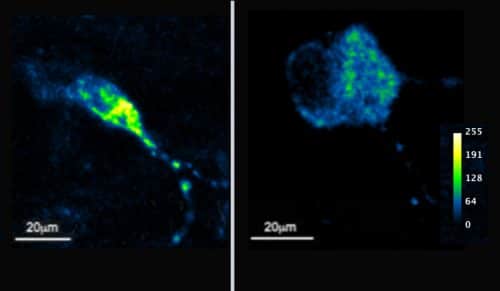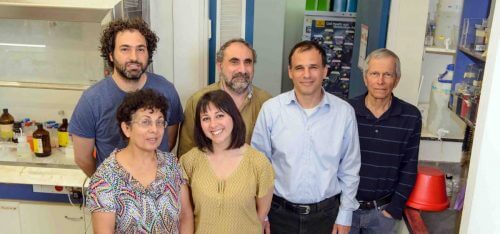Does the MTCH2 gene, which was previously associated with metabolic activity, also affect cognitive functions? Scientists from the Weizmann Institute discovered that neutralizing the gene in the forebrain of mice led to an increase in metabolism and a decrease in learning and memory abilities. These findings confirm that there is indeed a link between mitochondrial activity and cognitive functions, and may contribute to the understanding of neurodegenerative diseases.

In the previous episode it looked promising: genetically engineered mice ate more without getting fat, were in better shape than normal mice, and their heart function improved. This happened after scientists from the Weizmann Institute neutralized the MTCH2 gene from the muscle cells of those transgenic mice. But what happened when that gene was neutralized from neurons in the forebrain? At first, the findings were similar: the metabolism was high and the mice were hyperactive, but it soon became clear that something was wrong. The mice failed maze navigation tasks, and their spatial learning and memory skills appeared to be impaired. Following these first findings, the laboratory hands of Prof. Eitan Gross From the biological control department and the laboratory of Prof. Menachem Segal from the Department of Neurobiology - and thus was born interdisciplinary research that ranges from the level of the molecular processes in the cell to the level of the entire nervous system. the research,recently published in the scientific journal Scientific Reports, Links the MTCH22 gene with cognitive functions, and may point to a new way in the research and treatment of neurodegenerative diseases, primarily Alzheimer's.
The gene that codes for the MTCH2 protein - affectionately known as Mitch or Mitch2 - has accompanied Prof. Gross's laboratory for more than a decade. Mitch, discovered in the laboratory in 2005, is a protein located on the outer membrane of the mitochondria, those organelles known as the "powerhouses" of the cell. Since its discovery, Mitch's name has been associated over the years, among other things, with involvement in cell death processes, metabolic diseases, and recently also in neurodegenerative diseases. In the current study, it was discovered that neutralization of the gene from neurons in the forebrain of mice disrupted the movement ability of the mitochondria and the ability to balance intracellular calcium levels.
The connection between damage to the intracellular calcium balance and the deterioration of learning and memory skills did not surprise Prof. Menachem Segal, since in recent years his laboratory has been promoting an alternative approach to Alzheimer's research, which focuses on changes in the calcium balance as a central factor in the development of the disease. "The majority of people currently involved in Alzheimer's research focus on the deposits of protein aggregates in the brain, known as amyloids," explains Prof. Segal. "The popular claim is that if we eliminate these sediments, we can help people get well. This is the main direction of the research, and it should be remembered that these are investments of billions of dollars. On the other hand, the alternative claim in the direction of this research is that the problem in Alzheimer's lies in intracellular calcium balances: the calcium balance in the cells in the brain is a very delicate matter - if you raise or lower the calcium level a bit, you can cause very severe functional changes. And this is what we saw in the cells of the transgenic mice from Prof. Gross's laboratory - changes in the ability to handle intracellular calcium."
Prof. Segal hopes that the current study will strengthen the research approach to Alzheimer's that focuses on calcium balances. "You have to understand", he emphasizes, "we - the people who think that the calcium balance is an important element in the formation of Alzheimer's disease, which is one of the first processes that occur in this context - are in the minority. If we manage to convince the public, maybe a few more will join." The research was led by research student Antonella Ruggiero from Prof. Gross's laboratory. Dr. Judit Salzman from Prof. Gross's laboratory was involved in the research; research student Itai Aloni, Dr. Edward Kurkotian and Efrat Oni-Biton from Prof. Segal's lab; Dr. Yael Koperman, Dr. Michael Tzuri and Dr. Uri Brenner from the Department of Veterinary Resources, and Dr. Smeder Levin-Zidman from the Department of Chemical Research Infrastructures.

We - the people who think that the calcium balance is an important element in the formation of Alzheimer's disease, which is one of the first processes that occur in this context - are in the minority. If we succeed in convincing the public, maybe a few more will join"
The close collaboration created between a laboratory focused on molecular processes in mitochondria and a laboratory dealing with brain research, and lasting for two years, is not self-evident. Prof. Gross says: "We are not neuroscientists. We came to the brain from dealing with metabolism and obesity, and when we saw the deterioration in cognitive skills in the mice, we contacted Prof. Segal's laboratory. But it was not easy to convince them to open the laboratory to us. Everyone is busy with their work, and when I reach out to someone who is a neurobiologist, he says to himself: 'What's the matter, why are you coming to me?' Fortunately, we found here a common topic that interests us both." Prof. Segal is also satisfied with the decision to open his laboratory: "I really like this collaboration, because it connects two ends, all in biology - from the molecular level to the more systemic level." And Prof. Gross concludes: "How do you build such cooperation? It's not something that happens immediately, and it's very unusual and unique in the research landscape."
#Science_Numbers
Although the human brain weighs about one and a half kilos, it consumes about 20% of the amount of energy produced by the body.
